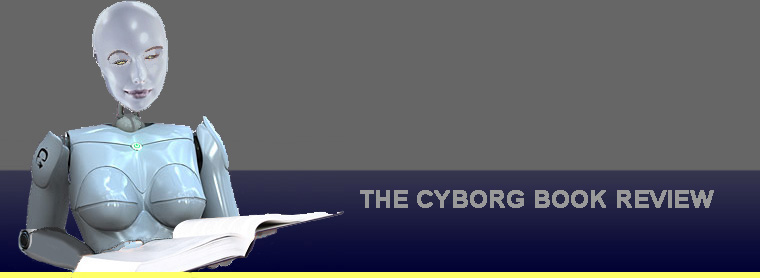Where did Galileo go for advice? Where did he find inspiration when he wanted to make sense of those odd orbital trajectories? In the 16th century there were precious little giants on which shoulders he could stand and most of them were dead and buried. Also, I’m pretty sure the library of the University of Padua didn’t have an internet connection.
Yet by meticulous observation and cold reasoning the Italian astronomer and mathematician forever changed the worldview of all humanity and infuriated a bunch of fundamentalists as an added bonus. This is what one dedicated man can do through careful application of the scientific method.
Now imagine hundreds, thousands, no millions of Galileis living at the same time, exchanging and debating ideas, attacking different problems through similar methods and vice versa, cross-pollinating, inspiring, competing, cooperating. The power of reason multiplied is an awesome power indeed.
This is the world we live in, right now!
Just consider the field of neuroscience. Today, tens of thousands of researches all over the world are following hundreds of different paths to that ultimate goal, understanding the workings of the human brain. They are scanning the contents of our skulls with ever more sophisticated instruments, they are growing neurons in petri dishes, they are interfacing animal brains with robots, they are building computer models of specific brain regions, etc, etc. When one road leads to a dead end, another forces a breakthrough. The gathered momentum is overwhelming, unstoppable.
Galileo, Da Vinci and a couple of odd scientists and artists spread throughout medieval Europe, delivered us from the dark ages. Our own Renaissance promises to be much more profound.
The Cyborg
Friday, July 17, 2009
Thursday, July 16, 2009
"Maybe you can drive my car"
Ever wished you had a personal chauffeur?
Here’s an idea: take a moth, cut of its head and wire it to your car’s steering mechanics.
In sum this is exactly what Japanese scientist Ryohei Kanzaki has accomplished, demonstrating the enormous leaps we’re taking in applied neuroscience these days.
Just make sure your designated driver doesn’t head obsessively towards the pretty white light.
The Cyborg
Here’s an idea: take a moth, cut of its head and wire it to your car’s steering mechanics.
In sum this is exactly what Japanese scientist Ryohei Kanzaki has accomplished, demonstrating the enormous leaps we’re taking in applied neuroscience these days.
Just make sure your designated driver doesn’t head obsessively towards the pretty white light.
The Cyborg
Labels:
neuroscience,
robotics
Wednesday, July 15, 2009
Invasion of the bodyhackers
As we discover new ways to plug into our brains and bodies, we’re going to have to come to terms with a new kind of criminal. In an article in Wired, computer security expert Tadayoshi Kohno, claims that if we don’t start thinking about the dangers, our increasingly complex neural devices will be vulnerable for attack by mindjackers, bodyhackers and all kinds of neuropirates (the neologisms are my doing). You wouldn’t want to lose control over that prosthetic arm, would you?
Think this is far fetched, some organisms already pull off this villainous trick in nature. The parasite Toxoplasma gondii tricks its host, an infected rodent, to be strongly attracted to cat urine. Why? So the parasite can complete its lifecycle in the feline's stomach.
Hey, maybe those voices in your head are real after all.
The Cyborg
Think this is far fetched, some organisms already pull off this villainous trick in nature. The parasite Toxoplasma gondii tricks its host, an infected rodent, to be strongly attracted to cat urine. Why? So the parasite can complete its lifecycle in the feline's stomach.
Hey, maybe those voices in your head are real after all.
The Cyborg
Labels:
highjacking,
neuroscience,
security
Wednesday, July 8, 2009
A Brainy Matter
The last bastion of human superiority, the biological brain, is quickly being encircled by technology and science. Its workings no longer baffle us and as Steven Pinker put it in his must-read book ‘How the Mind Works’, what was once a mystery is now a research problem.
Here are two articles that announce the end of an era:
The first offers a profound insight into the intricate workings of our synapses.
The second paves the way for subtle and precise communications between machines and the human brain.
For millions of years, the contents of our skulls represented the most sophisticated intellectual device around. Time to prepare a farewell party.
The Cyborg
Here are two articles that announce the end of an era:
The first offers a profound insight into the intricate workings of our synapses.
The second paves the way for subtle and precise communications between machines and the human brain.
For millions of years, the contents of our skulls represented the most sophisticated intellectual device around. Time to prepare a farewell party.
The Cyborg
Labels:
brain-machine-interface,
neuroscience
Thursday, July 2, 2009
Give us a hand

The ways in which we can interface with machines and computers is rapidly expanding. Case in hand (no pun intended): AnthroTronix just released its first commercial version of the AcceleGlove, an affordable, programmable glove that records hand and finger movements. The outgoing data can be manipulated (open source) for any imaginable use: gaming, rehabilitation, training, 3d virtual environments, you name it.
Our most defining body part just went virtual.
The Cyborg
Labels:
human-machine interface,
robotics,
virtual reality
Subscribe to:
Posts (Atom)
